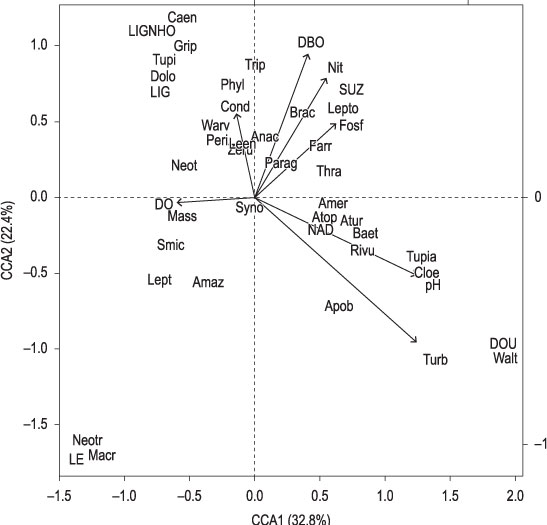AIMS: The objective of this study was to evaluate the effects of urban environments on the distribution and occurrence of aquatic Ephemeroptera, Plecoptera and Trichoptera (EPT) insects in six urban subtropical streams; METHODS: Organisms were collected with a Surber sampler in 2005 and 2006, over two hydrological cycles. We analyzed abundance values, taxonomic richness, Shannon-Wiener diversity and Pielou's evenness. A principal components analysis (PCA) was performed to evaluate the environmental variability of streams. A canonical correspondence analysis (CCA) was performed to evaluate the possible effects of environmental variables; RESULTS: The PCA ordered the streams according to their quality, and Suzana and Nadau streams had higher concentrations of nutrients. The Baetidae (Ephemeroptera) was the family with the highest number of genera (18). Perissophlebiodes Savage, 1983, and Americabaetis Kluge, 1992, were the most common genera. Anacroneuria Klapálek, 1909, was the most abundant Pleocoptera, and Smicridea McLachlan, 1871, was the dominant Trichoptera genus. In the CCA, pH, electrical conductivity and stream velocity were positively correlated with axis 1, whereas dissolved oxygen was negatively correlated with axis 1; CONCLUSIONS: Our results show that the distribution of EPT in urban streams is affected by changes in water physicochemical characteristics. However, these changes are not sufficiently severe to cause the elimination of EPT.
anthropogenic effects; multiple stressors; Ephemeroptera; Plecoptera; Trichoptera; environmental variables





